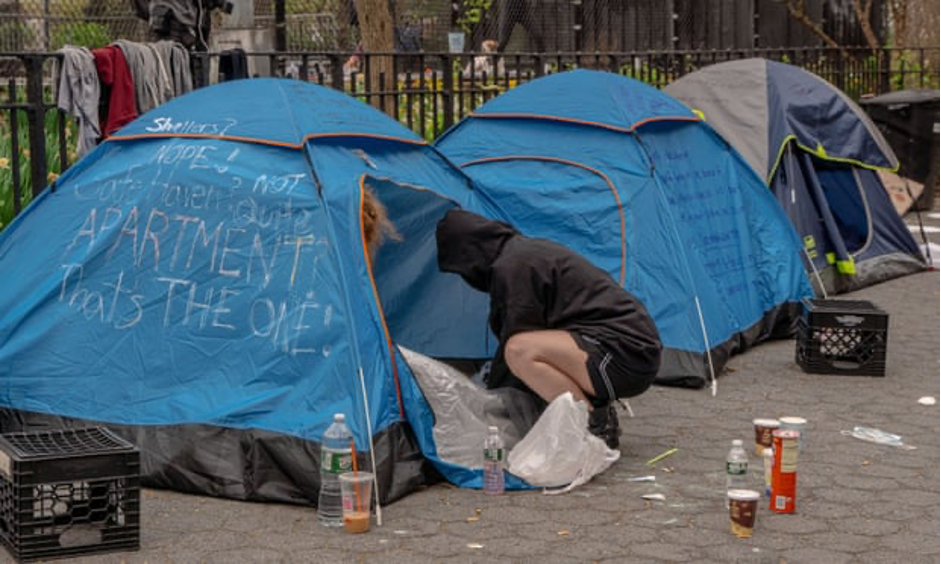
Some people may think New York City is a beautiful place to visit, but the city has a dark side that is often overlooked: homelessness. Many people in the United States struggle with homelessness, especially in the city that never sleeps, New York. Sleep is one of the hardest things to come by, alongside food, drinks, security, feeling safe, shelter, and having that family bond or friendship for those who face this as a daily reality. There has been a meteoric rise in the city’s homeless population. It is becoming increasingly unaffordable for the middle class and working poor to live in the city’s newest apartments. They have to work hard every day to get the things that most of us take for granted. These people are thankful for anything, while most people would be upset because they want more. They must resort to scavenging in trash cans or begging for money on the subway to survive. The number of people sleeping on the streets or in homeless shelters in New York City has risen dramatically in recent years (Asma-Sadeque). Not only that, but in 2021, there were only slightly more than twice as many homeless people housed in shelters.
Who are the homeless?
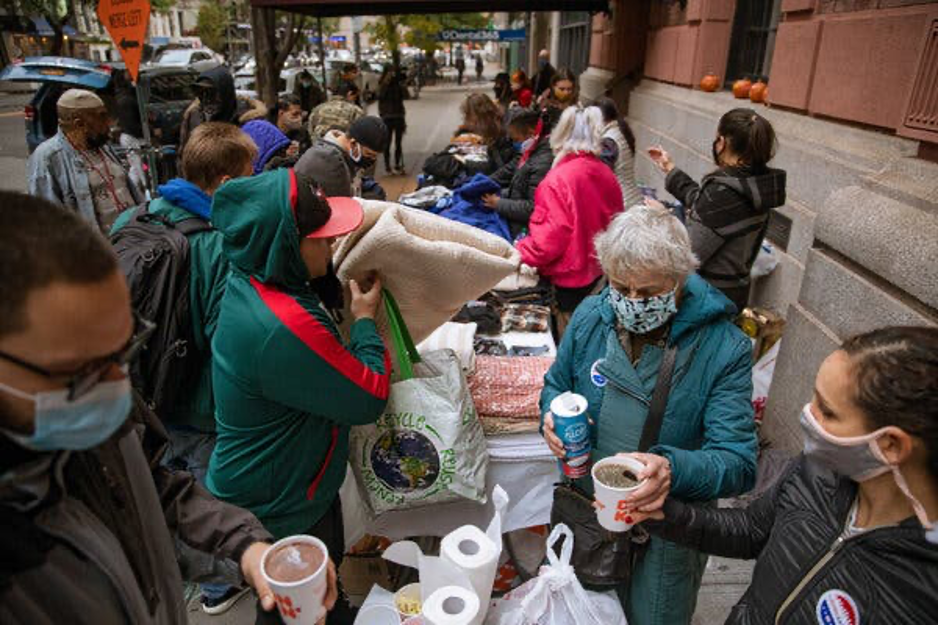
Homelessness impacts people of all sexes, races, ages, and socioeconomic statuses. Recently, New York City’s homeless population has risen to its highest point since the Great Depression era. In October 2022, 65,633 people, including 20,751 children, were using the primary municipal shelter system in New York City. In October 2022, the number of homeless single adults sleeping in shelters reached 22,077. As of the end of the 2022 City Fiscal Year, the New York City Department of Homeless Services (DHS) shelter system had provided emergency housing for 102,656 adults and children experiencing homelessness. There are 29,653 children in this category. Most of the homeless families in New York City come from a small number of concentrated zip codes in the city’s poorest areas (CFTH). Also, families and individuals experiencing homelessness in NYC come from all five boroughs. New York City’s homeless shelter population has grown 35% in the past decade. There are 111 more homeless single adults now than ten years ago.
What factors lead to homelessness?

A lack of affordable housing is a significant contributor to the homeless crisis. As the rent-to-income ratio rose, many low-income families and individuals were priced out of the housing market in the 1970s. Homelessness has worsened as a result of the rising cost of housing in recent years. Rising from $238,400 in 2012 to $454,900 in 2018 alone, the median sales price of a home in the United States has more than doubled in the last decade (Croll). In a report from 2020, the United States Government Accountability Office found that for every $100 increase in median rent, the estimated homelessness rate rose by 9%.
Being poor and having a woman as the primary breadwinner are two interconnected causes of homelessness. New York has a slightly higher frequency of both of these compared to our comparison cities. Shifts can partially explain changes in the homeless family population in family characteristics. In New York, there is no indication that poverty or female-headed households became significantly more common between 1983 and 1987 or less common after 1987. (Filer).
What unique challenges do the homeless face?
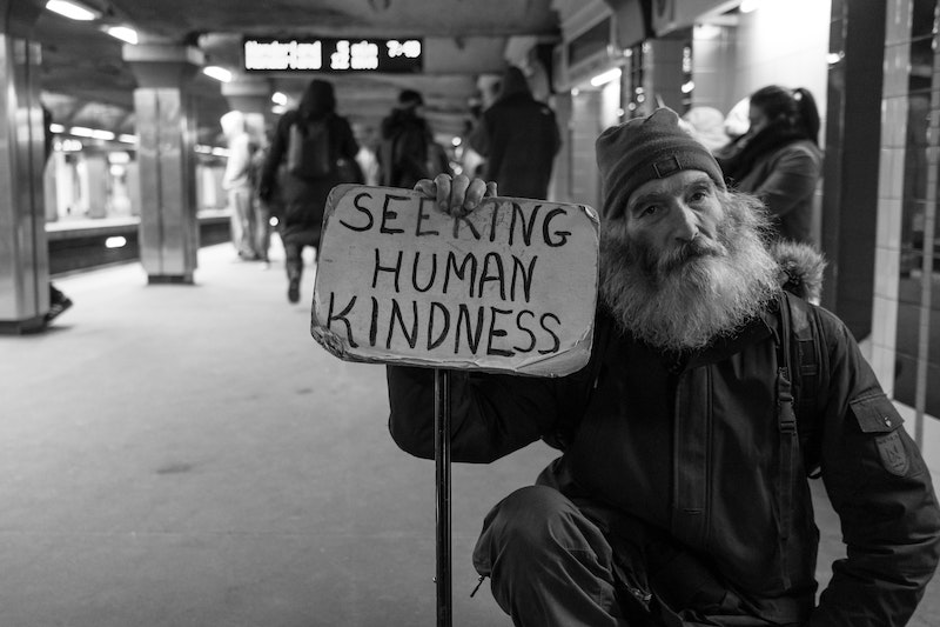
Living on the streets in New York City has many negative consequences. Many factors include the economy, society, the environment, and the individual. Every aspect of a person’s life suffers when they are homeless. Moreover, the homeless shelters themselves present a persistent and often hidden challenge. Most people who need help view help-oriented spaces as unsafe or harmful. Many people who are homeless have experienced trauma. The risk of emotional and behavioural issues in children is high.
What are the consequences of homelessness?
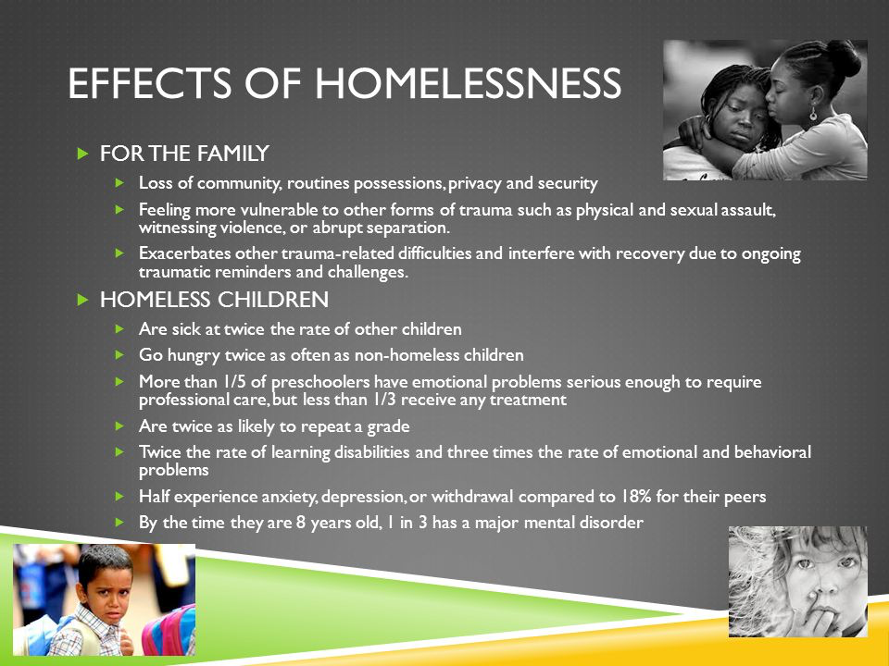
The victims of homelessness may suffer from a variety of consequences. Depending on the length of time someone is homeless, their loved ones and future generations may feel the effects. Additionally, homelessness can have psychological and social repercussions for those who experience it. The following are typical results of living on the streets. Homeless people are typically from low-income families because of the state of the economy. Because of low self-esteem and the inability to alter current circumstances make the chances of formerly homeless people regaining stability common when they relocate to short-term shelters or live with relatives. In addition, there is a very low probability that homeless people’s offspring will be educated or gain employable skills. As a result of their financial situation, many people living on the streets cannot provide their children with the resources they need to succeed in school. The resulting population decline is a further effect of premature deaths.
What laws exist to control homelessness?
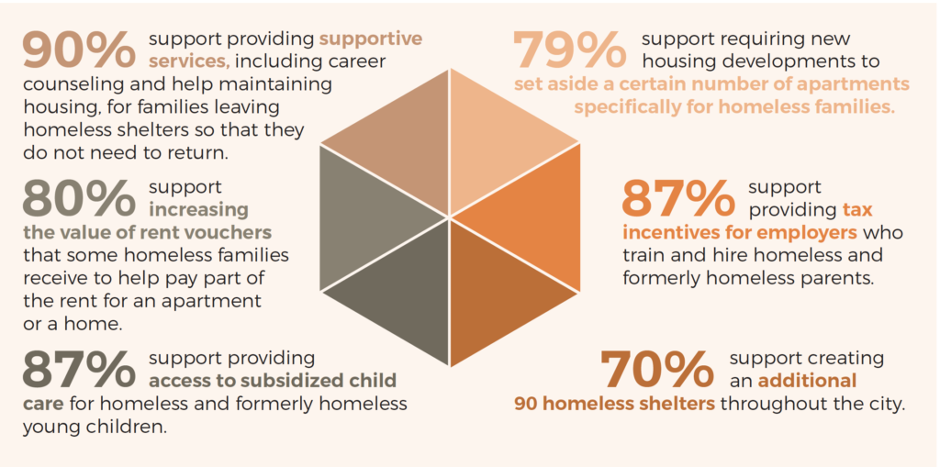
When it comes to the plight of the homeless in the United States, the law can be divided into two camps. First, those seeking to improve the quality of life for the homeless by providing them with shelter, food, and other necessities. Second, those that seek to criminalize homelessness and beg to coerce the homeless into finding permanent housing. The National Association for Home Care and Hospice strongly supports the Better Care, Better Jobs Act. It would expand Medicaid’s HCBS program to provide home health care and supportive housing services for people with acute needs experiencing homelessness. The House approved a modified version of this bill as part of the Build Back Better Act. The BBB Act made essential investments in low-cost housing that would significantly reduce homelessness. The House passed the bill, but it was never put to the vote in the Senate due to the opposition of a Democrat whose vote would have been decisive given the Republican majority.
Does the government have a responsibility to fight homelessness?

In the United States, ending homelessness is the sole responsibility of the United States Interagency Council on Homelessness (USICH). It coordinates the efforts of 19 federal agencies, departments, and public and private sector partners to maximize the effectiveness of national funding initiatives to combat homelessness.
Both national governments have assembled temporary task forces of prominent public members to work on specific issues. At first, the efforts of these task forces will be concentrated on eliminating homelessness; significant revenue funding will be made available to assist them in accomplishing their objectives (Morland). Welsh local governments were given a budget after the national government committed to ending youth homelessness and street homelessness in the country. Complex social and structural factors contribute to homelessness, but they can be addressed through government action. The efforts to end homelessness in the past have not always been successful, so we need to figure out why that is. A more equitable legal system has been implemented due to the devolution of law-making powers.
Are privatized solutions to homelessness feasible?
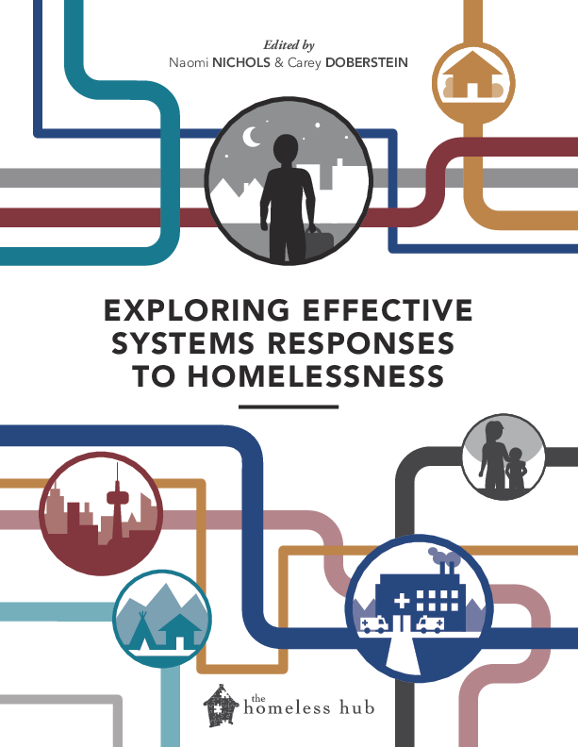
Public housing privatization did not become the prevailing policy overnight. While many public housing developments have been neglected, this action’s moral legitimacy has grown among the public (Perry-Brown). Collaborating with the police through Business Improvement Districts (BIDs) to “address homelessness” and gentrify neighbourhoods is another solution that excited businesses and property owners. Decades of deferred or patchwork maintenance and chronic underfunding have left some communities with few options, despite the widespread debate over whether privatization of public housing is an acceptable solution.
Can homelessness ever be ended?
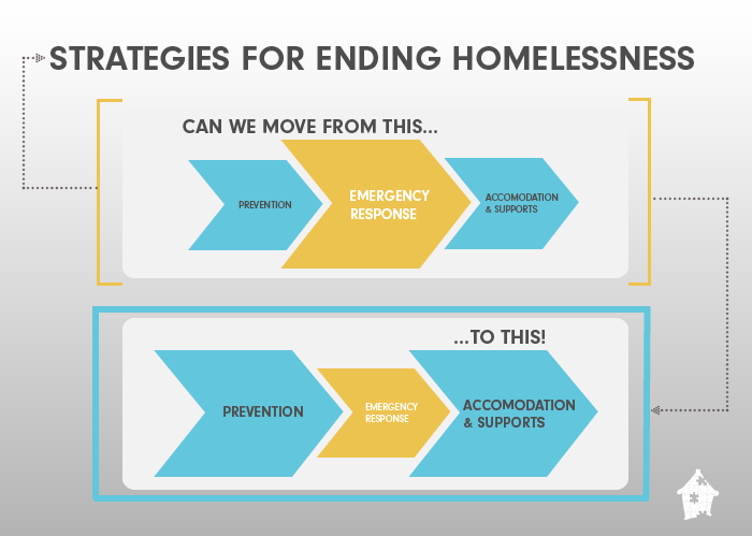
The issue of homelessness is one that we have brought upon ourselves. Though hundreds of thousands of people have to deal with it daily, it is unnecessary. Numerous programs, including Housing First, Critical Time Intervention, and others, have helped tens of thousands of people experiencing homelessness to gain stability in their lives and end their homelessness in the past decade. Adding more homes to the market is a quick and easy fix that could be implemented worldwide. The good news is that homelessness can be nearly eliminated, as shown by several programs and case studies.
What steps can be taken to fight homelessness?
Adding more homes to the market is a quick and easy fix that could be implemented worldwide. The good news is that homelessness can be nearly eliminated, as shown by several programs and case studies. The following methods are outlined in the recommendations:
- Concentrate on Objectives That Matter to the Neighborhood
- Build Political Support and Alliances
- Apply the Principle of Racial Equity to All Decisions
- Lessen the Hitch that is Regulatory Red Tape
- Intensify Efforts to Rehouse People
- Shorten Housing Placement Wait Times
- Ensure Access to Housing for People Sleeping Outside
- Landlords should be actively sought out, nurtured, and kept on.
- Utilize Helping Resources
Conclusion
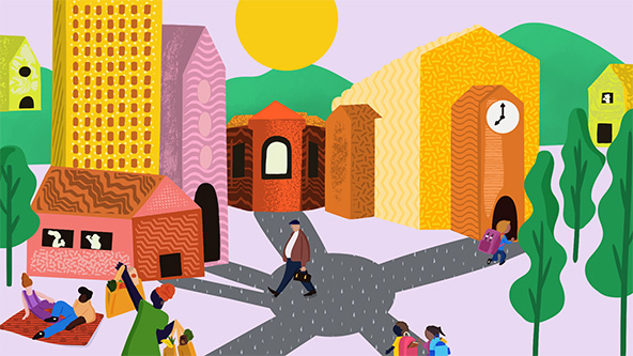
Finally, the list of homeless families is sure to grow due to rising prices in the metropolitan area, the ongoing economic recession, and the city’s inadequate housing policies. The home for all the homeless families in New York City is not in sight, even if the Mayor finds a way to provide beds for everyone. Still, the United States government must ensure a comprehensive evaluation of its social assistance programs to eliminate discrimination and expand access to opportunities for all citizens.
Work cited
Asma-Sadeque, Samira. “‘Fascism Works like That’: Homeless New Yorkers Struggle amid Police Sweeps.” The Guardian, 11 May 2022, www.theguardian.com/us-news/2022/may/11/new-york-city-homeless-sweeps-eric-Adams.
CFTH. “Basic Facts about Homelessness: New York City – Coalition for the Homeless.” Coalitionforthehomeless.org, 2022, www.coalitionforthehomeless.org/basic-facts-about-homelessness-new-york-city/.
Croll, Dylan. “The Factor ‘at the Base’ of Homelessness, according to NYC’s Ex-City Council Speaker.” Finance.yahoo.com, 28 Oct. 2022, finance.yahoo.com/news/christine-Quinn-causes-homelessness-165906063.html.
Filer, Randall K. “City Journal | Urban Affairs Magazine | Conservative Magazine Online.” City Journal, 23 Dec. 2015, www.city-journal.org/html/what-really-causes-family-homelessness-12786.html.
Morland, N. “The Role of Government in Eradicating Homelessness.” Www.linkedin.com, 2017, www.linkedin.com/pulse/role-government-eradicating-homelessness-Neil-Morland.
Perry-Brown, Nena. “Why Privatization Has Become the Public Housing Solution Du Jour.” Ggwash.org, 12 Aug. 2020, ggwash.org/view/78700/why-privatization-has-become-the-public-housing-solution-du-jour.
 write
write